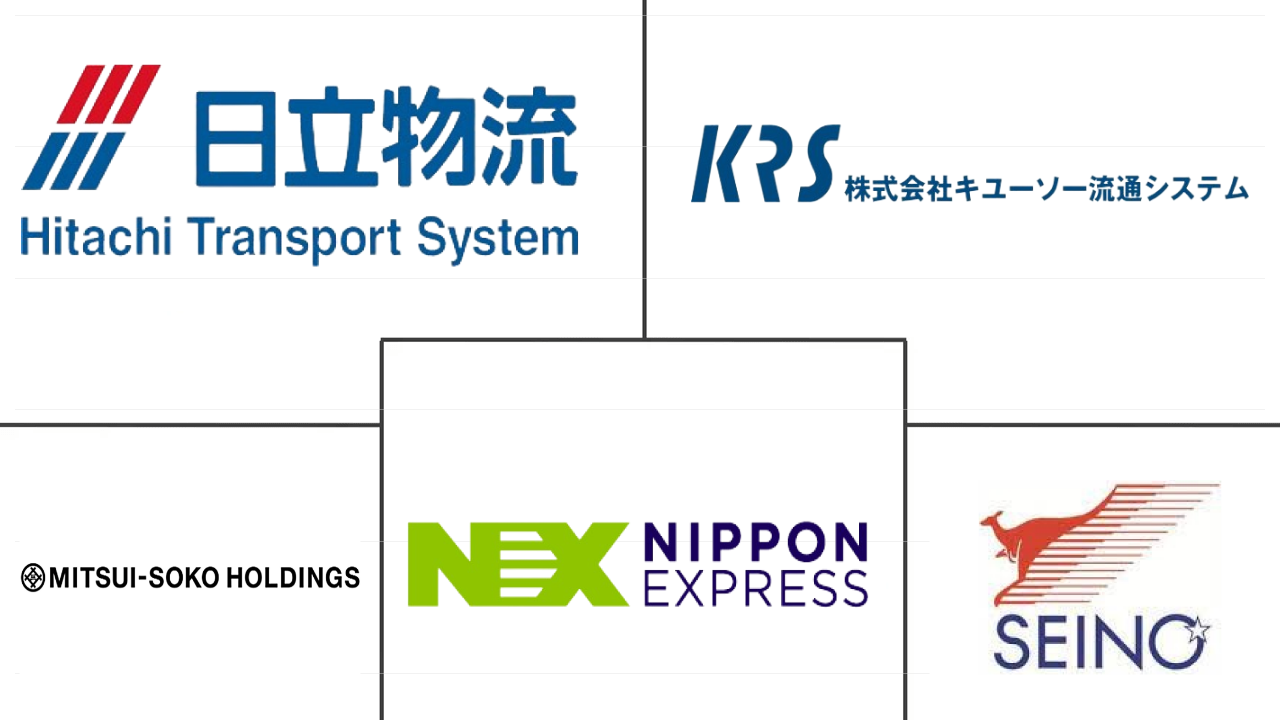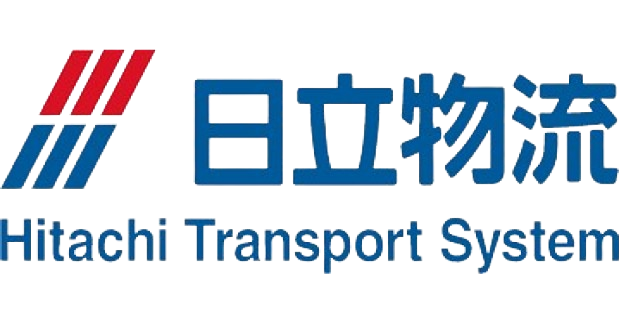Market Size of japan road freight transport Industry
|
|
Study Period | 2017 - 2030 |
|
|
Market Size (2024) | USD 126.86 Billion |
|
|
Market Size (2030) | USD 159.69 Billion |
|
|
Largest Share by End User Industry | Manufacturing |
|
|
CAGR (2024 - 2030) | 3.91 % |
|
|
Fastest Growing by End User Industry | Wholesale and Retail Trade |
Major Players |
||

|
||
|
*Disclaimer: Major Players sorted in no particular order |
Japan Road Freight Transport Market Analysis
The Japan Road Freight Transport Market size is estimated at 126.86 billion USD in 2024, and is expected to reach 159.69 billion USD by 2030, growing at a CAGR of 3.91% during the forecast period (2024-2030).
126.86 Billion
Market Size in 2024 (USD)
159.69 Billion
Market Size in 2030 (USD)
3.98 %
CAGR (2017-2023)
3.91 %
CAGR (2024-2030)
Largest Market by Distance
76.38 %
value share, Long Haul, 2023
Japan has been innovating to develop the long-haul segment significantly. In 2023, TuSimple announced the autonomous driving trials on a freight corridor connecting Tokyo, Nagoya, and Osaka.
Largest Market by Goods Configuration
60.87 %
value share, Solid Goods, 2023
In Japan, the solid goods segment dominates the market as the large majority of commodities are transported and significantly contribute to the value-added output of the country.
Largest Market by End User Industry
41.13 %
value share, Manufacturing, 2023
The Japanese manufacturing industry is the driving force that has supported the Japanese economy. It accounted for about 20% of the total GDP in 2022.
Fastest Growing Market by Truckload Specification
4.38 %
Projected CAGR, Less than-Truck-Load (LTL), 2024-2030
Small and medium enterprises in Japan comprise 3.58 million businesses, accounting for 99.7% of the overall companies, and they are the main driving forces of the LTL trucking segment.
First Leading Market Player
3.04 %
market share, Hitachi Transport System, 2022

Hitachi Transport System operates around 26 subsidiary companies across 328 locations in Japan. The company operates with 28,671 domestic employees in Japan.
The Japanese manufacturing sector, led by the automobile industry, has propelled the Japanese economy
- The Japanese manufacturing sector has driven the country's economy to the point where it is now the third-largest economy in terms of GDP and is regarded as one of the "Manufacturing Superpowers." Furthermore, Japan exported 4.42 million vehicles in 2023, up 16% from a year earlier, while domestic auto sales totaled nearly 4.78 million vehicles. The growth in exports drove the demand for road freight services.
- Japanese manufacturers have extensive global connections, particularly in Southeast Asia, and many have significant operations in countries such as Thailand. The annual Japanese automobile production is approximately 10 million vehicles, or EUR 160 billion (USD 181.07 billion). Toyota controls 30% of the Japanese domestic market, while Honda controls 14% and Nissan controls 11%. Renault, Mitsubishi, Toyota, Suzuki, Mazda, and other automakers are also in business. This is expected to lead Japan's exports and technological development in the CASE (connected, autonomous, shared, electric) era. The automotive industry is also looking into new markets for MaaS (mobility as a service).
- The retail and wholesale trade sector is another major contributor to the Japanese economy, with more than a 13.00% share. The segment grew significantly in 2022 due to increased sales in convenience stores. Sales reached a new high of USD 97.10 billion, representing a 3.70% increase over the previous year. The number of shoppers in 2022 rose by 0.6% compared to the previous year. These positive trends indicate a strong recovery of the convenience store industry. Moreover, during 2023-2027, the Japanese e-commerce market is expected to register a CAGR of 9.75%. Over the next few years, online sales are projected to increase seven to ten times faster than retail sales.
Japan Road Freight Transport Industry Segmentation Japan Road Freight Transport Industry Segmentation
Agriculture, Fishing, and Forestry, Construction, Manufacturing, Oil and Gas, Mining and Quarrying, Wholesale and Retail Trade, Others are covered as segments by End User Industry. Domestic are covered as segments by Destination. Full-Truck-Load (FTL), Less than-Truck-Load (LTL) are covered as segments by Truckload Specification. Containerized, Non-Containerized are covered as segments by Containerization. Long Haul, Short Haul are covered as segments by Distance. Fluid Goods, Solid Goods are covered as segments by Goods Configuration. Non-Temperature Controlled, Temperature Controlled are covered as segments by Temperature Control.
- The Japanese manufacturing sector has driven the country's economy to the point where it is now the third-largest economy in terms of GDP and is regarded as one of the "Manufacturing Superpowers." Furthermore, Japan exported 4.42 million vehicles in 2023, up 16% from a year earlier, while domestic auto sales totaled nearly 4.78 million vehicles. The growth in exports drove the demand for road freight services.
- Japanese manufacturers have extensive global connections, particularly in Southeast Asia, and many have significant operations in countries such as Thailand. The annual Japanese automobile production is approximately 10 million vehicles, or EUR 160 billion (USD 181.07 billion). Toyota controls 30% of the Japanese domestic market, while Honda controls 14% and Nissan controls 11%. Renault, Mitsubishi, Toyota, Suzuki, Mazda, and other automakers are also in business. This is expected to lead Japan's exports and technological development in the CASE (connected, autonomous, shared, electric) era. The automotive industry is also looking into new markets for MaaS (mobility as a service).
- The retail and wholesale trade sector is another major contributor to the Japanese economy, with more than a 13.00% share. The segment grew significantly in 2022 due to increased sales in convenience stores. Sales reached a new high of USD 97.10 billion, representing a 3.70% increase over the previous year. The number of shoppers in 2022 rose by 0.6% compared to the previous year. These positive trends indicate a strong recovery of the convenience store industry. Moreover, during 2023-2027, the Japanese e-commerce market is expected to register a CAGR of 9.75%. Over the next few years, online sales are projected to increase seven to ten times faster than retail sales.
| End User Industry | |
| Agriculture, Fishing, and Forestry | |
| Construction | |
| Manufacturing | |
| Oil and Gas, Mining and Quarrying | |
| Wholesale and Retail Trade | |
| Others |
| Destination | |
| Domestic |
| Truckload Specification | |
| Full-Truck-Load (FTL) | |
| Less than-Truck-Load (LTL) |
| Containerization | |
| Containerized | |
| Non-Containerized |
| Distance | |
| Long Haul | |
| Short Haul |
| Goods Configuration | |
| Fluid Goods | |
| Solid Goods |
| Temperature Control | |
| Non-Temperature Controlled | |
| Temperature Controlled |
Japan Road Freight Transport Market Size Summary
The Japan Road Freight Transport Market is poised for steady growth, driven by the country's robust manufacturing sector, particularly in automotive production and exports. Japan's position as a manufacturing superpower, coupled with its extensive global connections, especially in Southeast Asia, has bolstered the demand for efficient road freight services. The automotive industry, with major players like Toyota, Honda, and Nissan, is at the forefront, exploring new markets and technological advancements in the CASE era. Additionally, the retail and wholesale trade sectors, alongside the burgeoning e-commerce market, have significantly contributed to the demand for logistics and transportation services. The convenience store industry, in particular, has shown remarkable recovery, further fueling the need for efficient road freight solutions.
The transportation and storage sector in Japan has experienced significant growth, driven by technological innovations and investments in automation, AI, and robotics. These advancements have enhanced logistics efficiency, reducing costs and improving service quality. The sector's expansion is also supported by substantial infrastructure investments and government initiatives, such as the development of dedicated roads for automatic cargo transportation. Despite challenges like rising fuel prices and economic uncertainties, the market remains fragmented with key players like Hitachi Transport System and Nippon Express Holdings leading the charge. Strategic partnerships and sustainable initiatives, such as those by DHL Japan and Nippon Express, are also shaping the future of road freight transport in Japan, emphasizing sustainability and efficiency.
Japan Road Freight Transport Market Size - Table of Contents
-
1. MARKET SEGMENTATION (includes market size in Value in USD, Forecasts up to 2030 and analysis of growth prospects)
-
1.1 End User Industry
-
1.1.1 Agriculture, Fishing, and Forestry
-
1.1.2 Construction
-
1.1.3 Manufacturing
-
1.1.4 Oil and Gas, Mining and Quarrying
-
1.1.5 Wholesale and Retail Trade
-
1.1.6 Others
-
-
1.2 Destination
-
1.2.1 Domestic
-
-
1.3 Truckload Specification
-
1.3.1 Full-Truck-Load (FTL)
-
1.3.2 Less than-Truck-Load (LTL)
-
-
1.4 Containerization
-
1.4.1 Containerized
-
1.4.2 Non-Containerized
-
-
1.5 Distance
-
1.5.1 Long Haul
-
1.5.2 Short Haul
-
-
1.6 Goods Configuration
-
1.6.1 Fluid Goods
-
1.6.2 Solid Goods
-
-
1.7 Temperature Control
-
1.7.1 Non-Temperature Controlled
-
1.7.2 Temperature Controlled
-
-
Japan Road Freight Transport Market Size FAQs
How big is the Japan Road Freight Transport Market?
The Japan Road Freight Transport Market size is expected to reach USD 126.86 billion in 2024 and grow at a CAGR of 3.91% to reach USD 159.69 billion by 2030.
What is the current Japan Road Freight Transport Market size?
In 2024, the Japan Road Freight Transport Market size is expected to reach USD 126.86 billion.

